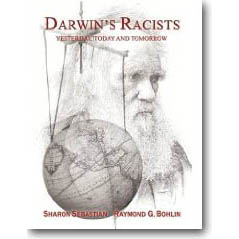Dr. Ray Bohlin discusses five crises in evolutionary theory: 1) the unsubstantiation of a Darwinian mechanism of evolution, 2)The...
Dr. Bohlin, I just read an article by yourself condemning evolution and the teaching of it. You state your...
How to Talk to Your Kids About Evolution and Creation – What Kids Should Know About Evolution
Sue and Dr. Ray Bohlin bring decades of Christian worldview thinking and a PhD in science to the important topic of...
In some circles to even ask this question and impugn Darwin’s integrity conjures up charges of secular blasphemy. After...
Why Is the Subject of Origins Important? Every worldview addresses the question, “Where did we come from?” The Christian...
On Tuesday, May 19, 2009, the very complete fossil of a small lemur-like animal, nicknamed Ida, was unveiled at...
February 12, 2009 is being promoted internationally as Darwin Day. Aside from being Abraham Lincoln’s 200th birthday it is...
The Facts The Texas State Board of Education is a group of fifteen individuals, representing various districts in Texas....
I recently attended a debate on “Intelligent Design (ID) and the Existence of God.” One of the four debaters...
“Shouldn’t the Statistical Improbability of Evolution Convince Open-Minded Evolutionists?”
Dear Dr. Bohlin, Thank you for your excellent article “The Five Crises in Evolutionary Development” which I just completed...






